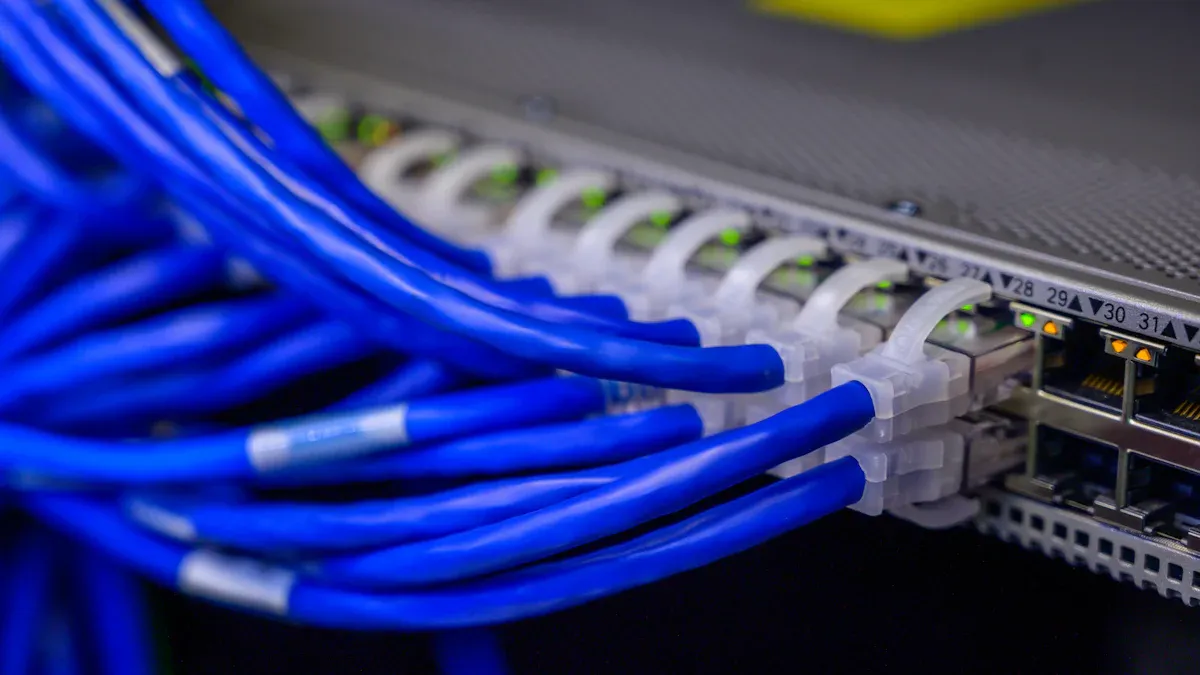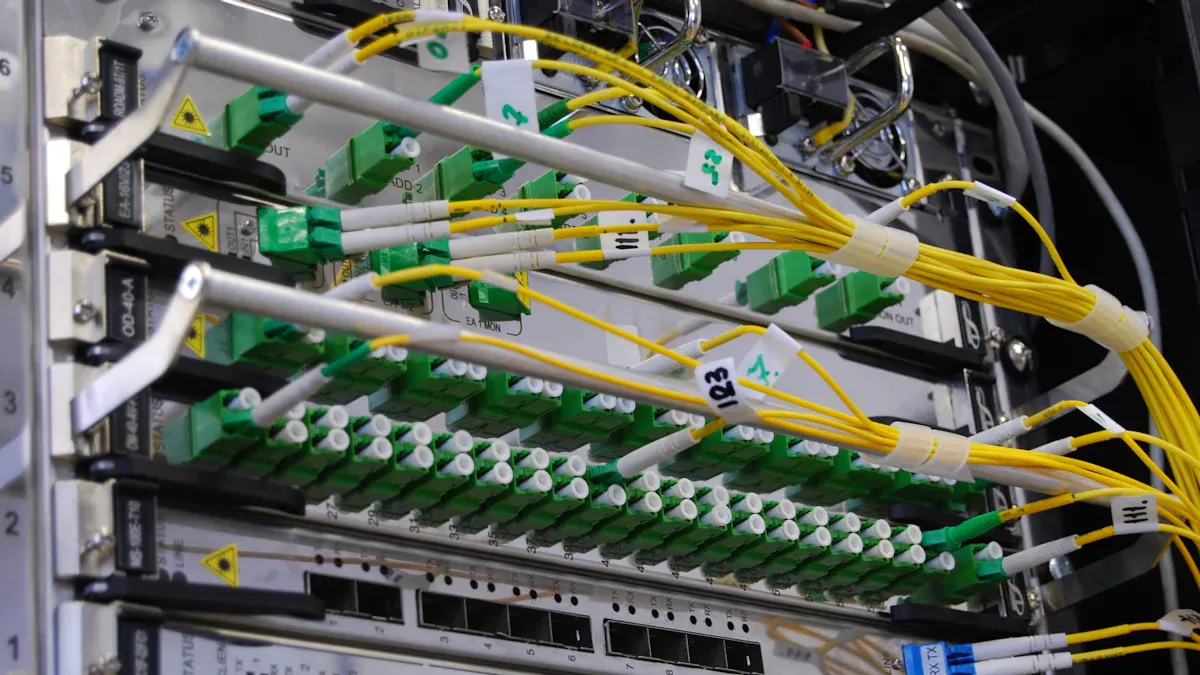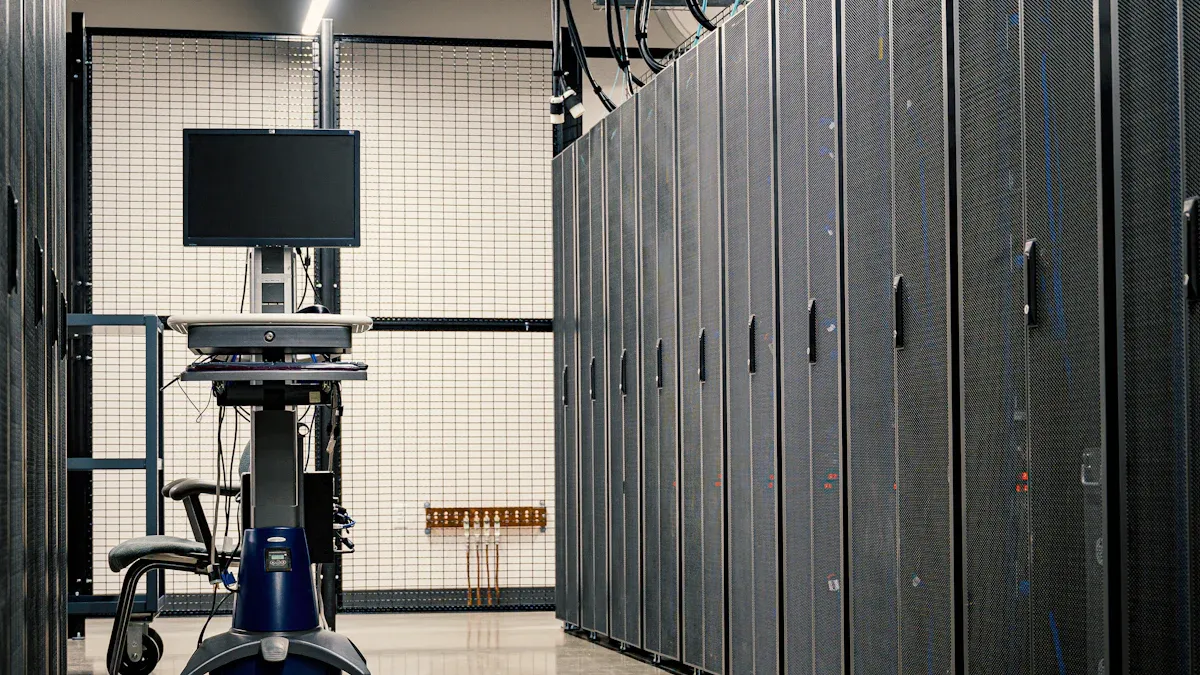Remote Monitoring of Telecom Cabinet Power Controllers: Practical Implementation & Cost Comparison of 4G/Ethernet Dual-Link Redundancy

Telecom Cabinet Power Controller technology plays a critical role in maintaining network reliability. Frequent device lockups or crashes, undetected failures, and harsh cabinet conditions often lead to extended outages. Operators face challenges such as the need for manual intervention and costly truck rolls. Intelligent controllers address these issues by sending recurring pings, detecting lockups, and rebooting devices automatically. Key considerations include redundancy, failover capabilities, cost, and deployment complexity, which influence the practicality of implementing 4G/Ethernet dual-link solutions.
Common downtime causes include:
Device lockups or crashes.
Lack of alerts or monitoring.
Persistent outages until customer reports.
Manual power-cycling requirements.
Insufficient standard remote reboot methods.
Harsh cabinet environments.
Unstable power supply.
Key Takeaways
Dual-link redundancy uses both 4G cellular and Ethernet connections to keep telecom cabinet power controllers online even if one link fails.
Redundant power supplies and CPUs improve system reliability and prevent downtime in harsh environments.
Automatic failover switches communication paths instantly, ensuring continuous remote monitoring without manual intervention.
Proper hardware selection, careful deployment, and regular maintenance reduce outages and improve system uptime.
Operators should balance cost and reliability by deploying dual-link redundancy mainly in remote or mission-critical sites.
Dual-Link Redundancy

Definition
Dual-link redundancy refers to the use of two independent communication paths—typically 4G cellular and Ethernet—in telecom cabinet power controllers. This configuration allows the system to maintain connectivity even if one link fails. Operators deploy dual-link setups to ensure that remote monitoring and control functions remain available at all times. The controller can switch between links automatically, using the secondary path when the primary becomes unavailable. This approach provides a robust solution for environments where network reliability is critical.
Power controllers often support dual CPUs and dual power supplies. Each CPU operates in either active or standby mode, ready to take over if the other encounters a fault. Dual power supply units share the electrical load under normal conditions. If one supply fails, the other instantly assumes the full load, preventing downtime. This design does not increase power consumption but significantly improves system stability.
Dual-link redundancy forms the backbone of mission-critical telecom infrastructure. Operators rely on these systems to minimize service interruptions and avoid costly manual interventions.
Importance
Dual-link redundancy delivers several key benefits for telecom cabinet power controllers. The following table summarizes the main advantages:
Benefit | Explanation |
|---|---|
Uninterrupted Power Supply | Dual power supply units ensure that if the primary power supply fails, the secondary immediately takes over, preventing downtime. |
Immediate Failover Capability | Dual CPUs operate in online/active and standby modes, allowing seamless switching to maintain system availability without interruption. |
Increased System Reliability | Redundancy in power supplies, CPUs, and communication networks reduces the risk of total system failure in mission-critical environments. |
Enhanced System Availability | Redundant communication networks provide alternate data paths to avoid delays or data loss, ensuring continuous operation. |
Critical for Mission-Critical Environments | These redundancies are essential in telecom and industrial control systems where uninterrupted operation is mandatory. |
Operators in telecom and industrial sectors depend on dual-link redundancy to maintain high system availability. Redundant communication networks offer alternate data paths, which help avoid delays and data loss. Dual CPUs and power supplies further reduce the risk of total system failure. These features prove essential for environments where even brief outages can disrupt services and impact revenue. Dual-link redundancy ensures that remote monitoring remains reliable, supporting proactive maintenance and rapid response to faults.
Telecom Cabinet Power Controller Redundancy
Connectivity Options
Telecom Cabinet Power Controller systems offer several connectivity options to ensure reliable remote monitoring. Operators often deploy both wired Ethernet and 4G cellular links to achieve dual-link redundancy. Ethernet connections provide stable, high-speed data transfer within well-developed network infrastructures. 4G cellular links serve as a backup, maintaining communication when the primary wired network fails or becomes unstable. Some controllers also support Wi-Fi or fiber connections, but Ethernet and 4G remain the most common choices for redundancy.
Power controllers manage these connections through automatic failover mechanisms. When the primary link fails, the controller switches to the secondary link without manual intervention. This process ensures continuous access to monitoring and control functions. Operators can configure link priorities and monitor the status of each connection in real time. The following table summarizes common connectivity options:
Connectivity Type | Typical Use Case | Redundancy Role |
|---|---|---|
Ethernet | Primary wired network | Main communication path |
4G Cellular | Backup remote access | Failover link |
Wi-Fi | Local wireless backup | Secondary/tertiary link |
Tip: Dual-link setups reduce the risk of communication loss, especially in remote or harsh environments.
SDN and PoE Integration
Modern Telecom Cabinet Power Controller solutions integrate with Software-Defined Networking (SDN) and Power over Ethernet (PoE) technologies. SDN enables centralized management and dynamic configuration of network resources. Operators can remotely adjust network policies, monitor traffic, and automate failover processes. This flexibility improves response times during outages and simplifies network maintenance.
PoE integration allows controllers to receive both power and data through a single Ethernet cable. This reduces cabling complexity and increases deployment speed. PoE also supports remote power cycling of connected devices, which enhances out-of-band management capabilities. Out-of-band management provides a separate control channel, allowing operators to troubleshoot or reboot equipment even if the main network is down.
Note: Combining SDN, PoE, and dual-link redundancy creates a robust, scalable solution for telecom infrastructure.
Implementation

Hardware Requirements
Operators must select hardware that supports dual-link redundancy for remote monitoring. The essential components include:
Telecom Cabinet Power Controller with dual-link capability
Industrial-grade 4G modem or router
Managed Ethernet switch
Dual power supply units
SIM card for cellular connectivity
Shielded Ethernet cables
A typical deployment uses a controller that features both 4G and Ethernet ports. The controller should support automatic failover and real-time link status monitoring. Industrial-grade modems withstand harsh cabinet environments and temperature fluctuations. Managed switches allow network segmentation and prioritize traffic for monitoring data.
Tip: Operators should verify compatibility between the controller, modem, and switch before installation. Hardware mismatches can lead to unreliable failover or communication loss.
The following table summarizes the recommended hardware specifications:
Component | Specification | Purpose |
|---|---|---|
Power Controller | Dual-link, auto-failover | Central monitoring and control |
4G Modem/Router | Industrial-grade, LTE/5G support | Cellular backup connectivity |
Ethernet Switch | Managed, PoE support | Wired network and power |
Power Supply | Redundant, hot-swappable | Uninterrupted operation |
SIM Card | Data plan, remote management | Cellular network access |
Ethernet Cable | Shielded, Cat6 or higher | Reliable data transmission |
Deployment
Operators follow a structured process to deploy dual-link redundancy in telecom cabinets. The steps include:
Site Assessment
Technicians evaluate cabinet location, network infrastructure, and power availability. They identify environmental risks such as moisture, dust, or temperature extremes.Hardware Installation
Teams mount the Telecom Cabinet Power Controller and connect both Ethernet and 4G links. They install dual power supplies and verify cable integrity.Network Configuration
Engineers configure link priorities, failover settings, and monitoring intervals. They set up SDN policies for traffic management and PoE for device power.Testing and Validation
Operators simulate link failures to confirm automatic failover. They monitor real-time status and verify remote reboot capabilities.Documentation and Training
Staff document the deployment process and train local technicians on troubleshooting procedures.
Note: Proper deployment reduces downtime and ensures reliable remote monitoring. Operators should schedule regular maintenance checks to maintain system integrity.
Challenges
Operators encounter several challenges during implementation:
Environmental Hazards
Cabinets often face extreme temperatures, humidity, and dust. These conditions can damage hardware and disrupt connectivity.Network Coverage Limitations
Remote sites may have weak cellular signals or unreliable wired connections. Operators must select hardware with strong antennas and robust failover logic.Power Instability
Fluctuating utility power can cause unexpected controller reboots. Redundant power supplies and surge protection help mitigate this risk.Integration Complexity
SDN and PoE integration require advanced configuration. Operators must ensure compatibility between all network devices.Cost Constraints
Budget limitations may restrict hardware choices or data plan options. Operators must balance reliability with cost-effectiveness.
Alert: Ignoring environmental and network challenges can lead to frequent outages and increased maintenance costs.
Operators who address these challenges during planning and deployment achieve higher system reliability and lower operational expenses.
Cost Comparison
Setup Costs
Operators face different setup costs when deploying remote monitoring solutions. Ethernet-based systems require existing network infrastructure, managed switches, and cabling. These costs remain low in urban areas with established networks. In contrast, 4G solutions need industrial-grade modems, SIM cards, and antennas. Rural or remote sites often lack reliable wired connections, making cellular hardware essential. Dual-link redundancy combines both technologies, increasing initial investment. The following table compares typical setup costs:
Solution Type | Hardware Cost | Infrastructure Needs | |
|---|---|---|---|
Ethernet | Low | Moderate | Existing network |
4G Cellular | Moderate | Low | Cellular coverage |
Dual-Link Redundancy | High | High | Both |
Note: Location and available infrastructure strongly influence setup costs.
Operational Costs
Operational expenses depend on data usage, maintenance, and utility power redundancy. Ethernet solutions incur minimal ongoing costs, except for network management. 4G systems require monthly data plans and periodic SIM card replacements. Dual-link redundancy increases operational costs due to dual network management and higher maintenance needs. Operators must also consider utility power redundancy, which adds to ongoing expenses but improves reliability.
Ethernet: Low monthly costs, routine network checks.
4G: Data plan fees, SIM management, cellular hardware upkeep.
Dual-Link: Combined costs, more frequent maintenance.
ROI
Return on investment (ROI) depends on reduced downtime, fewer truck rolls, and improved system reliability. Telecom Cabinet Power Controller deployments with dual-link redundancy often deliver higher ROI in mission-critical environments. Operators see savings from fewer outages and faster fault recovery. In less demanding locations, single-link solutions may offer better cost efficiency.
Tip: Operators should evaluate site requirements and risk tolerance before choosing a solution. Dual-link redundancy suits high-risk or remote sites, while single-link options fit stable, well-connected areas.
Reliability
Uptime
Telecom operators demand high uptime for remote monitoring systems. Dual-link redundancy plays a vital role in achieving this goal. By providing both 4G and Ethernet connections, power controllers maintain communication even if one link fails. This setup ensures that operators can monitor and control equipment without interruption. Reliable uptime reduces the risk of service outages and minimizes the need for emergency repairs.
Operators often implement automatic failover mechanisms. These systems detect link failures and switch to the backup connection instantly. As a result, monitoring and control functions remain available. Regular maintenance and testing further enhance uptime. Technicians check hardware, update firmware, and verify failover processes. These actions prevent unexpected failures and keep systems running smoothly.
Operators who prioritize uptime invest in robust hardware, redundant power supplies, and comprehensive monitoring tools. This approach protects critical infrastructure and supports continuous service delivery.
Case Studies
Real-world deployments highlight the impact of dual-link redundancy on reliability. The following table summarizes key outcomes and lessons from various facilities:
Location & Facility | Key Outcomes | Lessons Learned |
|---|---|---|
Data Center | Maintained 100% uptime during grid disruptions; avoided downtime; increased reliability | Continuous maintenance and testing ensure readiness; strong standby power is critical |
New York City Hospital | Maintained patient safety during severe weather; microgrid reduced fuel dependency | Hybrid systems add resilience; microgrid implementation enhances emergency response |
Houston Industrial Plant | Continuous operation during outages; improved resilience with batteries and generators | Multi-level standby power is essential; centralized monitoring optimizes performance |
Midwest Manufacturing Facility | System failure | Regular maintenance and record-keeping prevent unnoticed component degradation |
Urban Hospital | Partial power outage in critical areas | Proper system design and load distribution are vital; regular load testing detects flaws |
Coastal Data Center | Generator ran out of fuel during prolonged outage | Adequate fuel storage and supply chain planning are necessary |
High-Rise Commercial Building | Standby power system failed due to ATS malfunction | Regular ATS testing and redundant control systems provide fallback mechanisms |
These case studies show that dual-link redundancy, combined with strong maintenance practices, leads to higher uptime and reliability. Facilities that neglect regular testing or lack comprehensive backup systems face greater risks of failure. Operators who invest in robust design and proactive management achieve the best results.
Recommendations
When to Use Dual-Link
Operators should consider dual-link redundancy in several scenarios. Sites located in remote or rural areas often experience unreliable network infrastructure. In these locations, a single communication path may fail due to weather, vandalism, or equipment faults. Dual-link setups provide a backup, ensuring continuous monitoring and control.
Mission-critical facilities, such as data centers and hospitals, require maximum uptime. Even short outages can disrupt essential services. Dual-link redundancy helps maintain connectivity during network failures or maintenance windows. Operators managing multiple sites with varying risk profiles can prioritize dual-link deployment for high-risk or high-value locations.
Tip: Evaluate the risk of downtime and the cost of service interruptions before choosing a single or dual-link solution.
A Telecom Cabinet Power Controller with dual-link capability suits environments where network reliability directly impacts business operations. Operators should also use dual-link redundancy when regulatory requirements demand uninterrupted monitoring.
Cost Optimization
Operators can optimize costs while maintaining reliability by following several best practices:
Assess Site Requirements
Not every site needs dual-link redundancy. Operators should analyze the criticality of each location and deploy dual-link only where necessary.Leverage Existing Infrastructure
Use available Ethernet networks in urban areas to reduce hardware and installation expenses. Reserve 4G connectivity for sites lacking reliable wired connections.Negotiate Data Plans
Cellular data costs can add up quickly. Operators should negotiate bulk data plans with providers to lower monthly fees.Schedule Preventive Maintenance
Regular inspections and firmware updates reduce unexpected failures. Well-maintained systems require fewer emergency repairs, saving money over time.Centralize Monitoring
Use centralized platforms to manage multiple Telecom Cabinet Power Controller units. Centralized systems streamline maintenance and reduce labor costs.
Cost Optimization Strategy | Benefit |
|---|---|
Targeted Deployment | Avoids unnecessary expenses |
Infrastructure Utilization | Reduces new hardware requirements |
Bulk Data Plan Negotiation | Lowers recurring operational costs |
Preventive Maintenance | Minimizes downtime and repair costs |
Centralized Management | Improves efficiency and oversight |
Operators who balance reliability with cost control achieve the best long-term results. Smart planning and targeted investments ensure robust monitoring without overspending.
Dual-link redundancy offers strong reliability and cost-effectiveness for remote monitoring, especially in critical or remote sites. Operators should deploy dual-link solutions for Telecom Cabinet Power Controller monitoring where uptime is essential. For best results, they should use identical systems, simple redundancy protocols, and parallel paths. Standardized network designs and careful testing help prevent errors. Operators should maintain network backups and avoid unnecessary complexity to balance availability with manageability.
FAQ
What is dual-link redundancy in telecom cabinet monitoring?
Dual-link redundancy uses both 4G and Ethernet connections. This setup ensures continuous remote monitoring. If one link fails, the system automatically switches to the backup. Operators rely on this method to maintain high network reliability.
How does automatic failover work in power controllers?
Automatic failover detects a failed connection. The controller immediately switches to the secondary link. This process keeps monitoring and control functions active. Operators do not need to intervene manually.
Is dual-link redundancy cost-effective for all sites?
Operators find dual-link redundancy most cost-effective in remote or mission-critical sites. Urban locations with stable networks may not need it. Site assessment helps determine the best solution for each environment.
What maintenance does a dual-link system require?
Technicians perform regular hardware checks, firmware updates, and failover tests. They also monitor data usage and replace SIM cards as needed. Preventive maintenance ensures reliable operation and reduces downtime risks.
CALL US DIRECTLY
86-13752765943
3A-8, SHUIWAN 1979 SQUARE (PHASE II), NO.111, TAIZI ROAD,SHUIWAN COMMUNITY, ZHAOSHANG STREET, NANSHAN DISTRICT, SHENZHEN, GUANGDONG, CHINA

